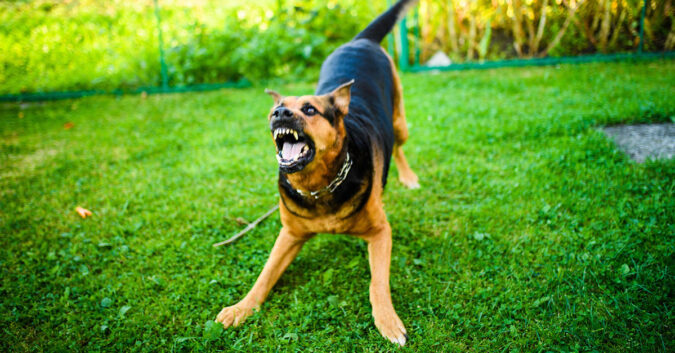Over the last few years, there has been a concerning rise in dog bites across the nation, with thousands suffering serious injuries.
Dog bite injuries tripled for several months in 2020, according to the Journal of Craniofacial Surgery. Even worse, the rate of dog bites involving children increased by 25% in 2020, according to a study in the Journal of Surgical Research.
Many researchers point to the COVID-19 pandemic as the reason for such a disturbing trend, but others argue the rise started even earlier.
Between 2018 and 2019, fatal dog bites also rose an alarming 37%. The causes behind these fatal injuries were present before the pandemic and may continue for years.
Sadly, dozens of dog bites become fatal injuries. Data from the U.S. Centers for Disease Control and Prevention (CDC) shows that 81 dog bites were fatal in 2021, a sharp increase from 62 the year prior.
Victims of dog bites may be able to seek justice by filing a dog bite lawsuit. Lawsuits can help those impacted get financial compensation to cover the medical bills after a serious bite.
Get a Free Dog Bite Case Review
Why Is There an Increase in Dog Bites?
It is hard to pinpoint the direct causes of the rise in fatal bites, but experts believe there could be several factors contributing. Learn about 4 possible causes below.
1. Lack of Training Knowledge
Pet ownership rose by 3% between 2019 and 2021. Unfortunately, many were first-time dog owners who may not have known the proper training or socialization their breed would need, especially when engaging with other animals.
One Massachusetts couple was hospitalized after their dog suddenly became aggressive against a family cat. The dog eventually latched onto one owner’s head and would not let go, leading to police having to shoot the dog.
“Especially for puppies, it’s really important to build positive associations with all different things," animal care and behavior specialist Anabelle Goldston told NBC News Boston.
Without training or socialization with potential triggers, the risk of aggressive behavior from the dog could increase.
2. Disrupted Routines During and After COVID-19
With families forced into close quarters, especially with children out of school, the likelihood of loud noises and overstimulation for family dogs could have increased.
Children who may not be familiar with reading dog body language could have spent long hours near their animals while their parents were preoccupied with work. Experts argue this could explain the sharp rise in dog bites involving children in 2020.
“Some of the injuries we saw were horrific. These are preventable injuries, in most cases,” said E.J. Caterson, chief of plastic surgery at a pediatric hospital.
To make matters worse, after pandemic lockdowns, families began returning to school or working in the office, traveling again, and making other routine changes.
As a result, dogs that previously had the exercise and attention they needed may be facing anxiety and pent-up energy that can increase the risk of aggression.
3. Hotter Days
Experts have drawn a connection between the rise in violent crimes and the rise in temperatures for humans. Unfortunately, dogs may not be excluded from this connection.
Harvard researchers found that dog bites rose on hotter days. While more studies need to be done as to why this is, it is suggested that the brains of dogs have a more difficult time managing stress while regulating temperature.
4. Social Media Trends
Popular trends like dog staring contests or trying to get dogs to smile could be dangerous, especially for young people on social media. These trends may seem harmless in their promise of likes and views for a “cute” pet video, but they fail to take into account animal behavior.
According to trainers and animal behavior specialists, smiling doesn’t mean the same thing for dogs as it does for humans.
When a dog smiles, “that’s a stress smile,” animal behaviorist Carley Faughn told The Hill.
Similarly, staring at dogs could be perceived as a threat and trigger an aggressive response or bite.
How to Prevent Dangerous Dog Bites
Whether you are a dog owner, a parent, or neither, there are steps you can take to prevent dangerous dog bites in the midst of rising trends.
Some ways to prevent dog bites include:
- Educating yourself and others on dog body language
- Enrolling dogs in professional training
- Keeping dogs calm and cool on hot days
- Providing enough exercise and enrichment for high-energy breeds
- Respecting a dog’s space and not approaching growling or barking dogs
- Safely socializing dogs around other people, animals, and environments
If you suffered an injury from a dog bite that wasn’t your fault, you may have legal options available to you.
What to Do After a Dog Bite: Sokolove Law Is Here to Help
After a dog bite, it's crucial to take action to protect your well-being and find assistance for medical bills. While it may seem overwhelming, a dog bite injury lawyer can help you get the support you need.
As a trusted personal injury law firm, Sokolove Law has over 40 years of experience fighting on behalf of clients who have been injured through no fault of their own.
Our lawyers have recovered over $9.3 Billion for clients across the country, including victims of dog bites.
Learn how we may be able to help you after a dog attack by calling (800) 995-1212 or starting a free case review now.
